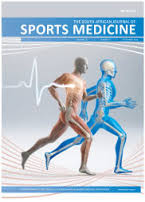The short-term effects of a sports stacking intervention on the cognitive and perceptual motor functioning In geriatrics
DOI:
https://doi.org/10.17159/2078-516X/2018/v30i1a4267Abstract
Background: Sport stacking has been beneficial in improving reaction time, as well as hand-eye-co-ordination; predominantly in children. Sport stacking intervention studies, although limited, have shown improvements in motor and cognitive functioning in both children and adults, post-intervention. Similar intervention studies on geriatrics are limited.
Aim: The aim of this study was to determine the effects of a sport stacking physical activity intervention on the motor and cognitive functioning of geriatrics.
Methods: An intact, convenient sample of 58 geriatrics from a retirement home in KwaZulu-Natal, South Africa was selected to participate in this study. All participants performed selected motor and cognitive functioning tests, pre- and post-intervention. Twenty eight participants were exposed to an eight-week intervention while the control group (30 individuals) continued with activities as usual.
Results: The intervention group showed improvements in their mean reaction time and plate tapping (hand-eye co-ordination) times. Overall, there were no changes in the balance test results pre- and post-intervention. There were no significant results from the memory and quality of life tests.
Conclusions: A sport stacking activity intervention has the potential to improve motor functioning in geriatrics, and its clinical application is recommended.
Downloads
Downloads
Published
Issue
Section
License
Copyright (c) 2018 South African Journal of Sports Medicine

This work is licensed under a Creative Commons Attribution 4.0 International License.
The South African Journal of Sports Medicine reserves copyright of the material published. The work is licensed under a Creative Commons Attribution 4.0 (CC BY 4.0) International License. Material submitted for publication in the South African Journal of Sports Medicine is accepted provided it has not been published elsewhere. The South African Journal of Sports Medicine does not hold itself responsible for statements made by the authors.
How to Cite
- Abstract 5982
- PDF 5583
Metrics

- Citations
- Citation Indexes: 1
- Usage
- Full Text Views: 169
- Abstract Views: 23
- Captures
- Readers: 13





.png)